Canada’s Subprime Mortgage Secret
The Globe and Mail recently published an article detailing what they called “Canada’s dirty subprime secret”. They looked into over 10,000 Canadian foreclosure proceedings and uncovered a subprime mortgage problem that many (including PM Stephen Harper) claimed does not exist in Canada. Here are some of the main points of the article. Some readers claim the article is fear-mongering and exaggerating the situation while other readers claim that we haven’t seen anything yet. I will let you form your own opinions. I would love to hear what you think. You can view the entire article by clicking the link at the end of this post.
– Data from both B.C. and Alberta governments and two private companies that specialize in tracking foreclosure proceedings show that lenders are foreclosing on homes at an “alarming rate”.
– More than half of foreclosures in 2008 were initiated by a number of subprime lenders who targeted riskier borrowers with poor credit histories.
– Thousands of homeowners borrowed more than they could afford and lenders lent money too easily.
– The number of unsold homes in Canadian cities is building which has ultimately depressed the value of homes of even people who haven’t overextended themselves.
– Canada does not report court ordered sales or foreclosure numbers like the USA which uses the data to gauge it’s economic health. In Canada it is hard to get these detailed numbers.
– In B.C. and Alberta private companies collect foreclosure data from the courts. Ontario handles their foreclosures through a process known as “power-of-sale which effectively removed the issue from the courts and shielded the scope of the problem”.
– Canada’s real estate sector has not suffered as much as the USA.
– It was common in the past couple years to hear companies who had relaxed lending practices state “We say yes when the banks say no” and “No income verification”.
– We do have a subprime problem in Canada, lenders significantly reduced their lending standards over the past five years.
– Vancouver courts are overwhelmed with the flood of foreclosure applications. It now takes six weeks to process an order vs. one day six months ago.
– Subprime lenders “trashed the market”. These lenders gave loans that no sound financial institution would touch.
– Many wealthy individulas offered private high-interest-rate mortgages to homeowners who already had high debt and are now foreclosing on the properties at lower values than projected.
– Canadian government agencies don’t publish numbers on the scope of high-risk lending also banks and other mortgage lenders don’t disclose details about these loans know as “non-conforming” loans.
– Until the early 2000’s: subprime mortgage lending was often done by private investors or mortgage lenders who would take a gamble and charge high interest rates to home buyers who didn’t meet conservative lending requirements. This was a very small percentage of mortgage lending.
– Mid 2000’s: this small percentage mortgage lending changed into the fastest growing segment of the country’s mortgage market. This brought aggressive U.S. mortgage lenders to the Canadian real estate market which happened predominantly in the west.
– The mentality was as long as real estate values continued to increase the lenders were not taking on a high amount of risk because they could always foreclose homes and sell at a profit.
– Aggressive U.S. mortgage insurers that were approved by the Canadian federal government in 2006. These mortgage newcomers further minimized their risk by selling mortgages to entities that sold securities backed by mortgages to investors.
– Benjamin Tal, an economist with CIBC world markets was one of the first to sound the alarm. He published a report in late 2006 that estimated subprime loans were growing at a “meteoric” annual rate of 50 per cent by the end of 2006, becoming the fastest growing segment of Canada’s mortgage market.
– In 2006, Mr. Tal estimated more than 85,000 Canadian homeowners had subprime loans.
– Late 2007 easy money and soaring real estate prices tempted many borrowers and lenders into viewing homes as cash machines. Numerous second and third mortgages at high rates of interest were taken out to fund a lifestyle that was not financially responsible.

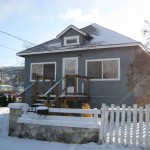 2+1 bedroom, 1 bathroom Bungalow. One of the cheapest single family homes in the area. Den and bedroom in the basement. Bring your updating ideas. $214,900
2+1 bedroom, 1 bathroom Bungalow. One of the cheapest single family homes in the area. Den and bedroom in the basement. Bring your updating ideas. $214,900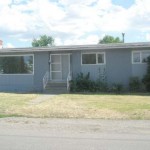 3+2 bedroom home in quiet area of North Kamloops. Close to elementary school and river’s trail. Main floor has all been extensively updated. 2 bedroom suite in basement. $289,900
3+2 bedroom home in quiet area of North Kamloops. Close to elementary school and river’s trail. Main floor has all been extensively updated. 2 bedroom suite in basement. $289,900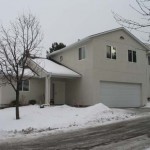 4 bedroom 2 full bathroom Juniper Heights town home. Newer kitchen, open design and private patio off of the living room. Two car garage. $289,900
4 bedroom 2 full bathroom Juniper Heights town home. Newer kitchen, open design and private patio off of the living room. Two car garage. $289,900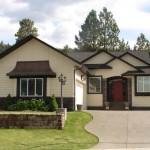
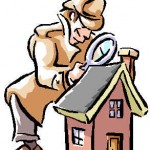 There are many reasons for a seller to want to sell their home, but the main goals are to sell it fast and for the highest price possible. It is important that before you list your home on the real estate market that you establish a list price. To figure out your homes value, you don’t base it on what you bought your home for or how you have improved or renovated your home. The value of a home is solely based on market value or simply what a buyer would pay for the home. “Market value is the price at which a particular house, in its current condition, will sell within 30 to 90 days.” Three things make up market value: The specific Home, the present condition of the home and what it will sell for in 30-90 days.
There are many reasons for a seller to want to sell their home, but the main goals are to sell it fast and for the highest price possible. It is important that before you list your home on the real estate market that you establish a list price. To figure out your homes value, you don’t base it on what you bought your home for or how you have improved or renovated your home. The value of a home is solely based on market value or simply what a buyer would pay for the home. “Market value is the price at which a particular house, in its current condition, will sell within 30 to 90 days.” Three things make up market value: The specific Home, the present condition of the home and what it will sell for in 30-90 days.